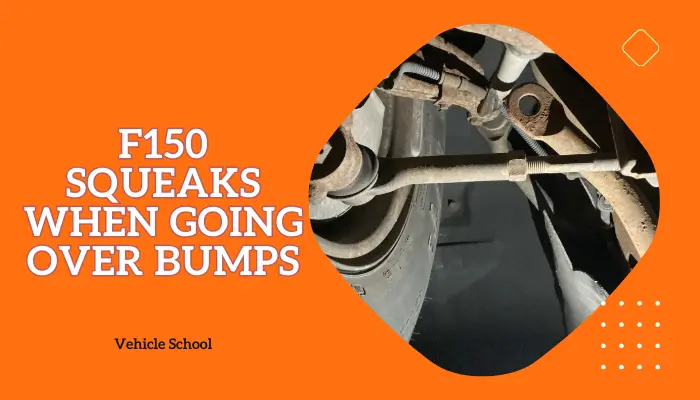Regarding Ford F150 transmission problems, the ones I’ve encountered most often include shifting issues like gear skipping, delays, and rough shifts. Sometimes, sensor or solenoid problems can be the culprit. Also, there are concerns such as contaminants in the transmission fluid and leaks.
These problems have led to lawsuits and a flood of complaints from owners.
If you’re dealing with such an annoyance in your F150 or just want to stay in the know, continue reading my guide.
What Are The Common Ford F150 Transmission Problems?
Each transmission model has its quirks, so you won’t find all the problems in one place, but they’re scattered across different generations of the F-150. Let me walk you through these issues, starting from the latest models and working my way back.
1. 10R60, 10R80, 10R140 Transmission Problems (2017 – 2023 F150)
The Ford F-150 10-speed transmission has problems such as misaligned CDF drum bushing, worn drum sleeves, general shifting problems, and a loose bolt in the parking pawl. The problems require fixes like replacing faulty components, tuning adjustments to the transmission control module (TCM), and proper reassembly to prevent the truck from moving while in parking gear.
If you bought your truck recently, you probably have a Ford-GM 10-speed automatic transmission. I’ll tell you more about these issues in the following sections.
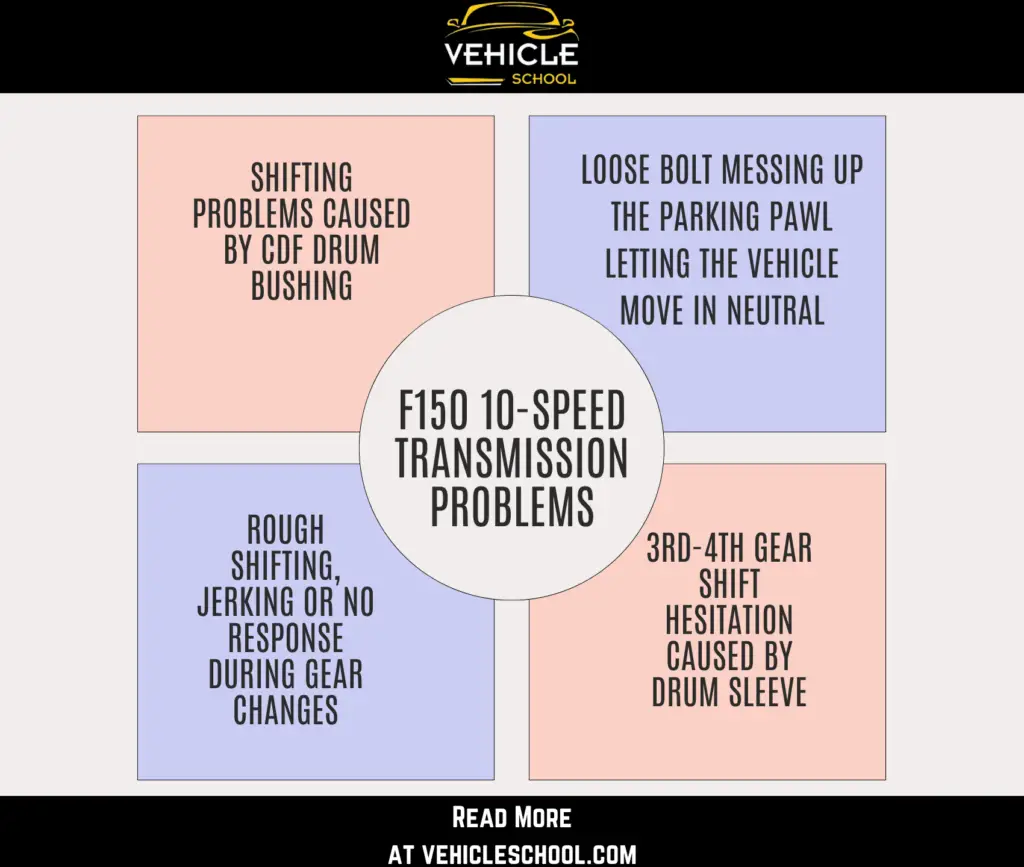
Misaligned CDF Drum Bushing Causing f150 shifting problems
With a Ford 10-speed Transmission, especially in certain F-150s from 2017 to 2023, you might notice odd shifting after 70,000 to 120,000 miles.
This includes double-shifting or delays, especially when the transmission is cold.
The issue is with the CDF drum, affecting models with 10R60, 10R80, and 10R140 transmissions in various Ford vehicles.
A bushing inside the CDF drum gradually shifts, causing fluid to leak. This affects how the clutches (C, D, and F) engage, leading to shifting problems.
Older models allowed the bushing to shift, but newer models have an updated drum with a redesigned bushing to prevent this.
This is a known issue in earlier 10-speed transmissions.
| Possible Fix: Consider swapping out the CDF drum bushing with the updated version. This simple fix tackles the root issue, making your shifting smoother and more reliable. |
Worn Drum Sleeve Causing 3rd-4th Gear Shift Hesitation
Another 10R80 transmission issue in Ford F-150s, especially in cold areas like Minnesota, is a worn drum sleeve. It helps control gear change pressures.
When it’s cold, this sleeve can cause odd shifts, like hesitation or double shifting between the 3rd and 4th, and 4th and 3rd gears.
These improve as the transmission warms up, showing temperature sensitivity. The 10R80 is sensitive to fluid levels and pressure, especially in cold weather.
Fluid may not reach levels fast enough, leading to strange shifts until it warms for smooth operation.
These issues have been observed in models such as the 2017 and 2018 F-150s equipped with the 3.5L EcoBoost engine and the 10R80 transmission.
| Possible Fix: Some owners have found tuning adjustments to the transmission control module (TCM) can help with shifting issues. Reprogramming the TCM modifies shift points and firmness, improving performance. When things get dicey, the only fix has been to swap out the whole transmission. |
General Shifting Issue In 10R80 Transmission
The 10R80 transmission has been reported to have rough shifting, including jerking, hesitation, and feeling sluggish or having no response during gear changes, which are commonly associated with ford f150 transmission not shifting properly.
Things like broken parts controlling gear changes, wrong fluid pressure causing delays, software mistakes in the control system, and worn-out clutch and valve parts can all cause this.
These problems not only impact driving comfort but also pose safety risks, as improper shifting can affect your control, increasing the risk of accidents and straight-up traffic collisions.
Loose Bolt In Parking Pawl
Another problem (though much rarer) with Ford’s 10-speed automatic transmission, involves a loose bolt.
This small part caused some serious Ford transmission issues, leading to a recall.
Specifically, the loose bolt might mess up the parking pawl, a key part that keeps the vehicle still when it’s in “Park”.
If this happens, the transmission acts like it’s in “Neutral,” letting the vehicle move unexpectedly.
The loose bolt probably came from another part of the transmission during assembly, like a gear or casing, and ended up near the parking pawl, messing up how it works.
This was a design problem, a very small number of f150 trucks ended up dealing with the problem. You can check out the end of the post for more information on the recall.
2. 6R80 or Ford f150 6 speed automatic transmission problems (2009-2017 F150)
The common problems with the Ford F150 6-speed automatic transmission include harsh shifting and clunking noises due to PCM issues, and sensor problems leading to strange shifting which can be fixed by checking and replacing the lead frame, resetting the TCM after PCM updates, and addressing any problems with the Turbine Shaft Speed sensor.
This is the second most common transmission with F150s. Let’s learn more about the reasons causing these issues.
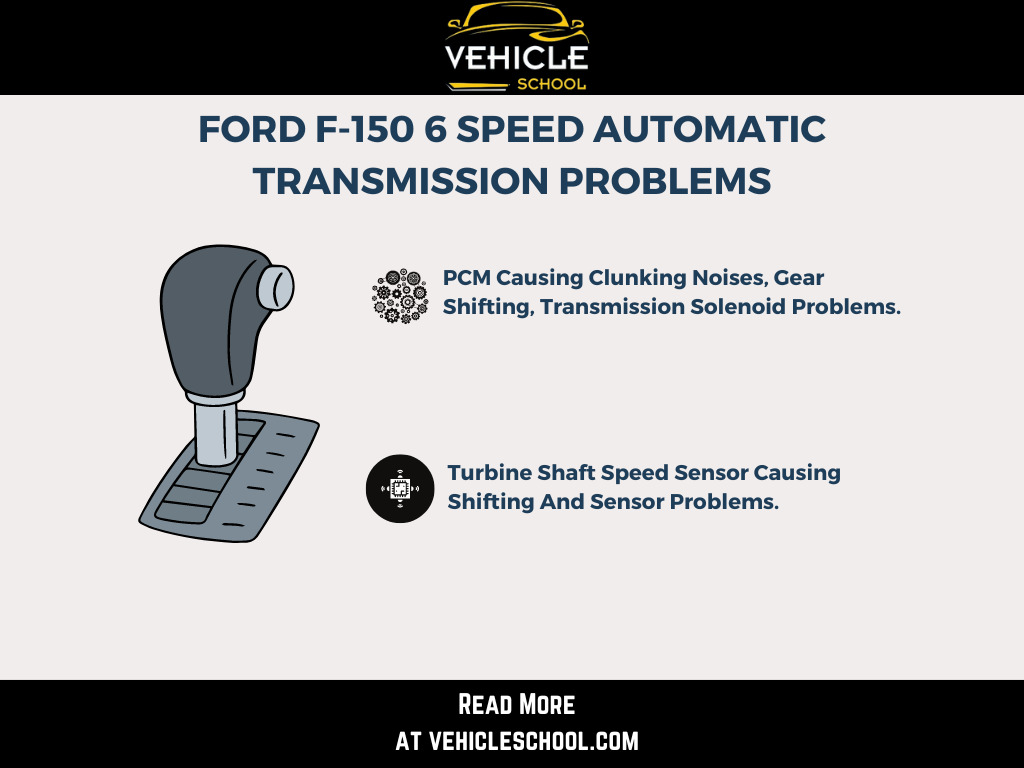
Clunking Noises, Gear Shifting, Transmission Solenoid Problems Due To PCM
An issue affecting 2013 Ford F150s to 2016 5.0L ones with 6R80 transmission after 70,000 miles is harsh shifting from 3rd to 4th gear.
This is often followed by clunking or clicking noises and erratic shifts. There are also persistent noises when starting, accelerating, or changing gears.
This worsens post-PCM updates like “C” to “E,” as the transmission control module (TCM) loses learned data on shift points and pressures.
The TCM then struggles, causing aggressive or delayed shifts, especially the 3-4 shift.
These models are also prone to lead frame faults in the transmission, affecting solenoid control. A PCM update may reveal these issues, making the harsh shifting worse.
| Possible Fix: If you face Ford 6r80 transmission problems like shifting harshly, try checking and replacing the lead frame. Resetting the transmission control module (TCM) after a PCM update might help, too. And, of course, keep an eye on your transmission fluid for cleanliness and proper levels. |
Ford F150 Transmission Sensor Problems & Strange Shifting Due to Bad Turbine Shaft Speed
With this 6-speed transmission, the Turbine Shaft Speed (TSS) sensor wears out and its wiring gets corroded, developing poor connections.
When this happens, it gives the Transmission Control Module (TCM) incorrect data about how fast the turbine shaft is spinning.
As a result, the transmission can shift strangely or go into limp mode.
The TSS sensor is grouped with other important sensors like the Output Shaft Speed (OSS), Transmission Fluid Temperature (TFT), and Transmission Range (TR) sensors.
If this sensor breaks, it can affect the others as well.
Thankfully, this isn’t a problem for the newer transmissions. There’s a rumor about the 10-speed transmission range sensor having problems, but it’s been fine in my experience fixing F150s so far.
3. 4R75W & 4R75E Transmission Problems (2003-2008 F150)
The Ford F150’s 4R75E and 4R75W transmissions are reported to have problems like hard and jerky shifting due to worn shift solenoids and valve bodies, loss of overdrive leading to rough shifts and higher RPMs, and metal shavings in the transmission fluid, which can be resolved by changing the transmission fluid.
The 4R75W and 4R75E transmissions are more problematic with the last F150 series they came with, the 2008 Ford F150. Let’s learn more about the problems with these transmissions.
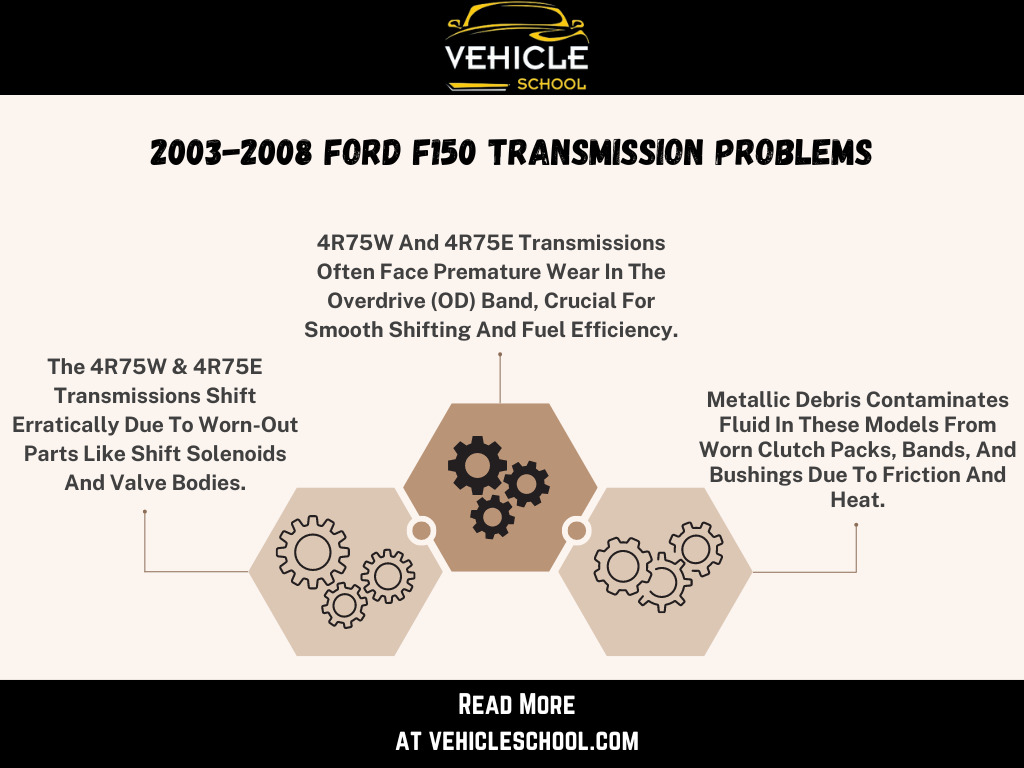
Erratic Shifting Due To Bad Shift Solenoids And Valve Bodies
The 4R75W & 4R75E transmissions might start shifting weirdly because parts like shift solenoids and valve bodies wear out over time.
These parts control how fluid moves around, but all the heat and friction wear them down.
When they’re worn, they can’t signal the transmission right, causing jerky or delayed shifts.
Loss of Overdrive (OD)
The 4R75W and 4R75E transmissions commonly suffer from early wear in the Overdrive (OD) band.
This band helps with smooth shifts into OD for better fuel efficiency and lower engine RPMs on the highway. Heavy towing can speed up this wear, leading to problems when shifting into OD.
Signs include rough shifts, higher engine RPMs, and a noticeable “bucking” sensation, especially when towing or hauling heavy loads.
Metal Shavings in Transmission Fluid
This model often ends up having metal bits in its transmission fluid. These bits come from parts like clutch packs, bands, and bushings wearing down.
They’re supposed to last a long time, but the constant rubbing and heat can cause them to deteriorate.
When they wear out, they release metal bits into the fluid, which is harmful to your transmission.
| Possible Fix: This still doesn’t happen all the time, but if it happened to your truck, simply change the fluid. Though less common, this also happens with modern transmissions – although transmission fluid change costs aren’t as high as replacing the transmissions themselves. |
4. 4R70W Transmission Problems (1993-2003 F150)
The 4R70W transmission problems in Ford F-150s include issues like low fluid after rebuilds, water entering the transmission, failure to engage 1st gear due to stuck clutches, forward clutch binding, and one-way snap ring failures. Fortunately, you can solve these issues by replacing seals, ensuring proper cooling, and addressing clutch wear.
This transmission is a lot older and I’ve seen people still using older Ford trucks with this transmission. Here we will learn more about these issues.
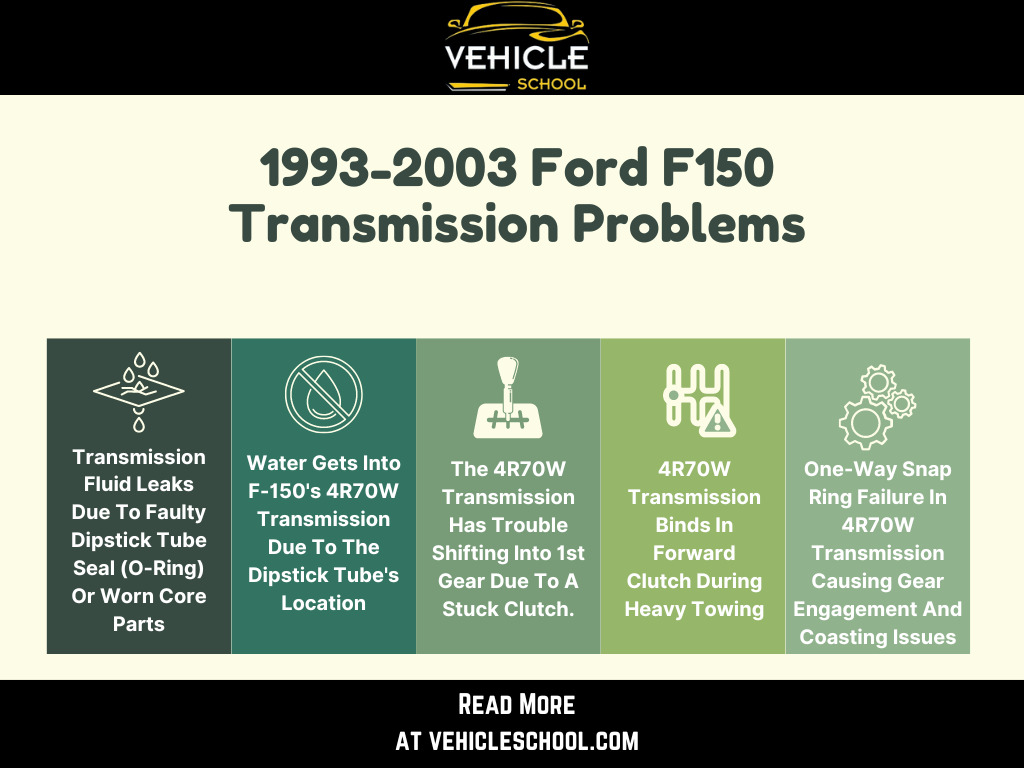
Low Transmission Fluid after Rebuild
After a rebuild, the F-150’s 4R70W transmission might have low fluid due to a faulty dipstick tube seal (O-ring) or worn core parts.
If the seal isn’t replaced correctly, it can leak slowly. Heavy towing can stress core parts, causing seals and gaskets to wear and leak fluid.
Low fluid leads to poor lubrication, clutch overheating, and rough gear shifts.
Water Entering Into Transmission
Water can get into the F-150’s 4R70W transmission due to the dipstick tube’s location near the heater coil and core hoses.
This is more likely during off-road trips or bad weather. Leaking seals or casing damage can also let water in, especially during heavy rain or water crossings. Water mixing with the transmission fluid causes rust and corrosion, damaging clutches and seals.
This can lead to costly transmission damage during tasks like off-roading and towing.
Failure to Engage 1st Gear Because Of Stuck Clutch
The 4R70W transmission in the F-150 can have trouble shifting into 1st gear, often due to a stuck forward clutch.
This can be caused by wear or dirty fluid, especially in trucks used for heavy towing or stop-and-go driving.
When the fluid flow is hindered, usually by blockages in the transmission cooler or lines, it worsens. Insufficient lubrication and cooling lead to 1st gear shifting issues.
Forward Clutch Binding
The 4R70W transmission in the F-150 can have issues with forward clutch binding, especially when towing heavy loads or in stop-and-go traffic.
This is caused by heat buildup in the forward clutch. As the clutch plates’ friction material wears down over time, they can stick together.
This transmission’s design has trouble cooling efficiently, especially in heavy-duty use, resulting in rough or delayed shifting if not fixed promptly.
One-Way Snap Ring Failure
The 4R70W transmission in the F-150 might have trouble with its one-way snap ring, an important part for gear engagement and coasting.
This ring can fail due to manufacturing defects or heavy use, especially when towing near the truck’s limit or driving in tough conditions, particularly while accelerating in 1st gear.
5. Troubles With M5OD-R2 Transmission (1988-1996)
The most common M5OD-R2 transmission problems in Ford F150s are gasket leaks and bearing wear, often fixed by replacing aged gaskets and worn bearings, respectively. Also, keep an eye out for worn shift forks, as they can lead to gear slipping problems, which may require replacement or a complete rebuild kit for a solution.
The recent trucks only use automatic transmissions, but if you’re trying to fix up an antique truck, you might want to check out problems with this F150 manual transmission. Among this set of trucks, the 1994 Ford F150 was the most reliable.
Here are more details on the problems:
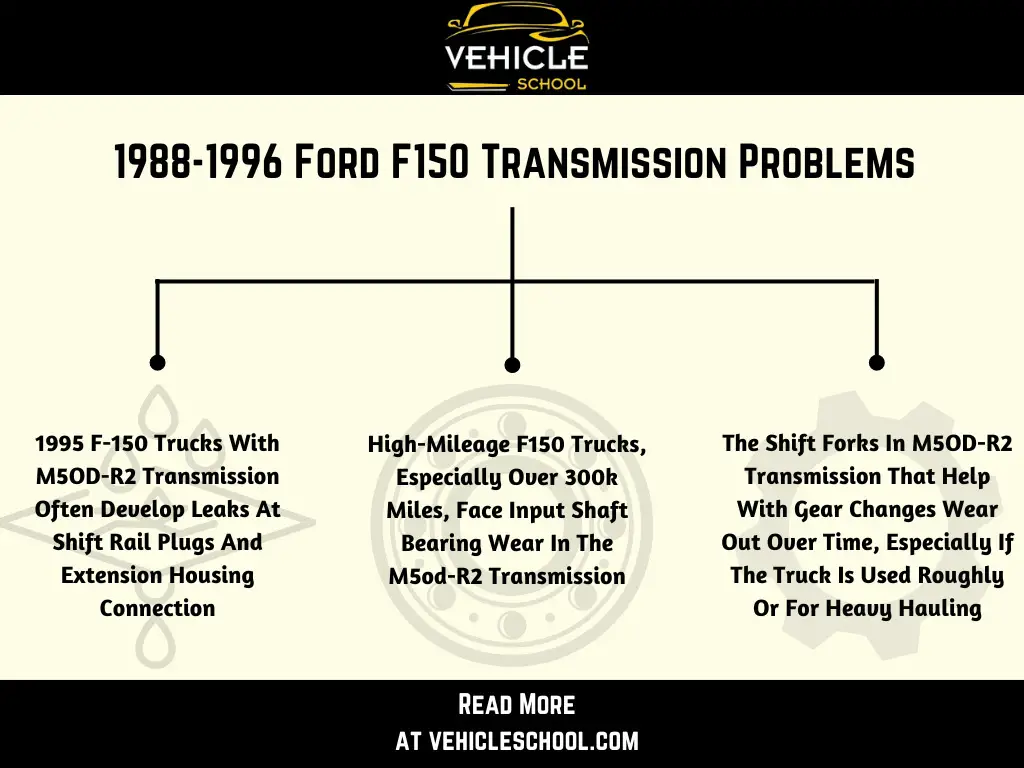
Gasket Leaks
The M5OD-R2 transmission in 1995 F-150 trucks commonly develops leaks over time, particularly at the shift rail plugs and where the transmission connects to the extension housing. This is often due to aging and hardening gaskets.
Aftermarket shifter bushing kits can worsen leaks if pins don’t fit properly. Some models lack a wavy washer, leading to variations in part design.
These issues typically manifest in older trucks with significant mileage.
Bearing Wear Issues
Another M5OD-R2 transmission problem in high-mileage F150 trucks, like those with over 300k miles, is the input shaft bearing wearing out.
This bearing, stressed by the spinning input shaft, can wear down due to dirt and debris. As it wears, shifting becomes harder, especially when downshifting or shifting quickly.
Older M5OD-R2 models in F150s from the mid-’90s to early 2000s might have materials and designs that worsen this issue as the miles pile up.
Gears Slipping Due To Worn Shift Fork Causing
Another issue with the M5OD-R2 transmission in F150s, like the 1990 F250 XLT Lariat with a 302 V8, is worn shift forks.
These forks help with gear changes and can wear out over time, especially if the truck is used roughly or for heavy hauling.
Signs include trouble shifting into reverse, rough shifting from 1st to 2nd gear, and transmission slipping.
Trucks with the 5.0 engine, often in lighter F150 models (like the 6600 gvw-rated ones), are more likely to have this problem.
| Fix: Nothing quick for this one. To fix it, you’d need to replace the worn forks or use a complete rebuild kit, especially for trucks with lots of wear or high mileage. |
How Much Does It Cost To Replace F150 Transmission?
Transmission rebuilds can be costly, but you can look around in different states for great offers. Here’s an idea of how much you’ll have to spend based on the transmission your truck has:
| F150 Transmission Code | Replacement Cost |
| 10R60, 10R80, 10R140 | $1,500-$8,500 |
| 6R80 | $6,000 |
| 4R75W & 4R75E | $1,000-$2,500 |
| 4R70W | $1,000-$2,400 |
| M5OD-R2 | Under $1,000 |
FAQs
Which transmission, the 6-speed or the 10-speed, tends to be more reliable in Ford F150 trucks?
Based on my experience and research, the 10-speed transmission in Ford F150 trucks is less reliable than the 6-speed transmission.
How many miles does the F150’s transmission usually last?
You can get more or less 150,000 to 200,000 miles if you keep your driving in check. If you end up driving more aggressively, you might end up breaking the transmission in your F150 early.
Has Ford made a transmission recall for the f150?
Yes, you can check out this National Highway Traffic Safety Administration Technical Service Bulletin about the Ford 10-speed transmission recall for the 2022-2023 Ford F-150. There’s a loose (extra) bolt potentially present in the automatic transmission, affecting 297 trucks. You can find records of even more recalls for it at Dealer Rater.
Which F150 is reported to have the most transmission problems?
The 2004 Ford F150 model tops the list for Ford transmission problems. At least 94 drivers on Car Complaints reported issues like no overdrive, transmission failure, and clunking while driving.
Did Ford face legal troubles for transmission problems?
Yes. Someone has filed a Class Action Lawsuit against Ford for their 10R80 transmission. Has Ford fixed the 10-speed transmission problems mentioned in that lawsuit? Nope. This transmission has even caused issues not just in Ford F-Series trucks, but also in other models like the Ford Ranger or Ford Mustang.
Ending Remarks
Considering the intricacies of Ford transmission problems, it’s likely necessary to bring your vehicle in for repairs. These issues can be quite complex and may require more than 12 hours to fix, often demanding specialized equipment.
Once it’s sorted, try easing up on the gas pedal a bit. Unfortunately, with Ford being Ford, you might still face transmission troubles. It’s mostly luck as to how long it holds out.
Just do what you can to put off the inevitable.

